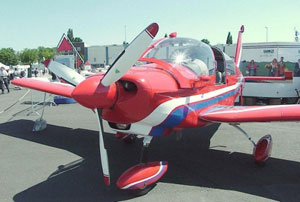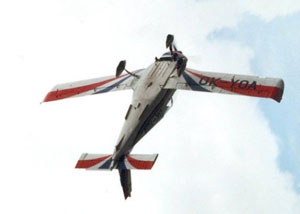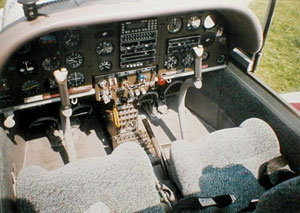
Four air raids worse than four wars
Four different Tiger guerrilla air raids within just over a month has caused more panic and concern in the country's defence and security establishment than four different phases of the separatist war - the last being the ongoing undeclared Eelam War IV. At meetings of the National Security Council, conferences at the Ministry of Defence and forward planning exercises by Army, Navy, Air Force and Police headquarters, the main focus still remains the air threat posed by Tiger guerrillas. Even if there is a lull in the skies after the last sortie in the early hours of April 29, different state intelligence agencies are all agreed that more surprise attacks cannot be ruled out. The fears are further enhanced by the belief that the guerrillas may want to accomplish more targets before counter measures are fully in place. But the Security Forces and the Police are already embarking on immediate measures until major steps are in place. Towards this end, an Indian Air Force team has also serviced Indian-built 2D radars and related equipment for more efficient functioning. The escalating war, coupled together with the air raids, has affected tourist arrivals in Sri Lanka. The situation has been further compounded by the ill-advised move to shut the international airport daily from 10.30 p.m. until 4.00 a.m. The tea trade, one of the biggest foreign exchange earners, is complaining about delays in rushing samples to their principals abroad through courier services. The latter has been forced to re-route their consignments via different capitals entailing delays. Some apparel, cut flower and fruit exporters are hard hit. They find it difficult to meet schedules of cargo flights listed for nights prompting threats from their principals to cancel orders. Thus, the airport closure, which came as an open admission that the Government is unable to protect its own airspace, at least the skies over the international airport and the access routes, was also contributing slowly but surely to economic damage. This is not to mention the non-arrival of passengers from the region who used Colombo as the hub for connecting flights to Europe and the Far East. As a result, there is no business for the hotels around the international airport area and even taxi drivers. Yet there are visitors to Sri Lanka. Some of them in the recent weeks make an interesting tribe. They include those who want to market various types of radars, satellite monitoring systems and all forms of antidotes to meet enemy air threats. Some with connections have succeeded in interviewing Defence Ministry officials whilst others have been lobbying through local contacts and those who have in the past remained Colombo agents. Officially such agencies have "ceased to exist" since the Government set up Lanka Logistics and Technologies Ltd. under the Ministry of Defence. This wholly-owned Government company is headed by Gotabhaya Rajapaksa, Defence Secretary, and is solely responsible for "the procurement of equipment and services for the Armed Forces and the Sri Lanka Police Department." Others on the board of directors are Treasury Secretary Dr. P.B. Jayasundera, the Commanders of the Army, Navy, Air Force and the Inspector General of Police. In seeking approval from the Cabinet for the setting up of this company, President Mahinda Rajapaksa, who is also the Minister of Defence, Public Security, Law and Order told his Ministers there would be a two-fold advantage. One was a substantial saving to the country both directly and indirectly. The other, it would ensure "transparency with regard to large transactions pertaining to procurement which time and again came under serious criticism by various agencies and the public." Sri Lanka diplomatic missions overseas were advised to channel all military deals through this company. Notwithstanding the functioning of a newly created state agency to deal with all military procurements, thus eliminating the role of local agents, there is still a striking, if not interesting feature. Though officially no local agents are now deemed to be operating, they are very much active. The small community in Colombo turned out to be a repository of information on who is trying to sell what to the state-owned company. They were fully well aware of the items purchased, costs and the military deals that are now on the pipeline. The reports were not only circulating in the bars of star class hotels but have also filtered down to many other quarters. Not surprising that the pro-LTTE website Puthinam.com was the first to report that the Government is now on the look out for MiG-29s to be obtained on lease. Contrary to earlier expectations, a Sri Lanka Air Force team that was to travel to Moscow to examine the possibility of procuring MiG-29 multi-role combat aircraft has put off indefinitely their departure. The exact reasons for this are not known. But, this week the SLAF Director Aeronautical Engineering, Air Vice Marshal Prishantha Silva, is due to leave for Ukraine from where the Government is exploring the possibility of obtaining on lease two MiG-29 aircraft. Since SLAF pilots are not trained to fly MiG 29s, a package with the Ukrainian supplier is expected to be a conditional wet lease. That is to include Ukranian pilots until such time their local counterparts are qualified to fly the jet fighter. It was from Ukraine that the Government concluded the controversial deal to procure four MiG -27 aircraft last year. The four aircraft which were reported to be completely overhauled were delivered to the SLAF. Recently two of them were listed as unserviceable. One, however, was repaired this week. The other remains still unserviceable due to minor defects. Air Force sources said spares were being awaited from Ukraine under the warranty to effect repairs. Aviation experts and some senior Air Force officials are sceptical about the total effectiveness of the MiG-29s to meet the threats posed by light aerobatic aircraft built in the Czech Republic. They liken it to something like killing a fly with a sledgehammer. They point out that the MiG-29s have been manufactured to engage fighter aircraft of similar capability. Hence, MiG 29s have not been used in any theatre of combat anywhere in the world to attack non-combat light aircraft by any conventional Air Force in the world. "It's like using a brand new Mercedes Benz to knock down a Bullock Cart," says a serving Air Force flyer who did not wish to be identified. He says that the Russian built MiG-29 is speedy and well equipped for air-to-air combat which the Tiger guerrillas are incapable of. "At most they could drop locally made bombs on a pre-determined target. At worst, in desperation they could use the aircraft as a "flying bomb" to carry out a suicide attack. But they simply do not have the capability to engage us directly in the air," he said. The four seater Zlin Z-143 aircraft has been in production since 1992. Over 7,000 units are reported to have been sold worldwide by the manufacturer to flying clubs, Air Forces and wild life reserves among others. Here is a comparison of some relevant details of a MiG-29 and Zlin Z 143, the type known to be in the Tiger guerrilla air wing inventory. The maximum speed of MiG-29 is said to be 805 miles per hour (1300 kilometres) at sea level or 1,518 mph (2445 kph) at 39,370 feet. Its range (with internal fuel) is said to be 932 miles (1500 kilometres) whilst (with external fuel) it is 1,802 miles (2,900 kilometres). The maximum airspeed of Zlin Z-143 is said to be 260 kilometres per hour with a service ceiling (or maximum height) of 4170 metres. Whilst the take off and landing distances is only 50 feet, the take off run is said to be 380 metres. However, the landing run is said to require a distance of 765 metres. The aircraft could also be modified to two seats making it a long range version. This helps it carry a higher payload. This in effect would almost treble the payload of 240 kilos it could carry. A "flying bomb" on a suicide mission with such a load could no doubt be disastrous and the consequences unimaginable. Whilst the MiG-29 is a proven combat aircraft used in many roles in the air, the LTTE is only in possession of a much cheaper single engine light aircraft. The high air speed of the MiG-29 makes it five times faster in the air than the Zlin Z-143. Whilst the price for leasing the MiG-29s is still not known, the acquisition of new ones would have averaged at anything between US $ 10 to 15 million each. Moreover, the acquisition of these jets would not mean that prompt answers have been found for a primitive air threat. It would also entail the acquisition of missiles, to be chosen from varieties like radar guided, heat seeking infra red to laser guided ones. An approximate cost of these missiles is said to be around US $ 30,000 each (or Rs 333,000). Thus, it becomes more expensive to destroy a cheap aircraft in Tiger guerrilla possession. Some experts are of the view that less costly and more effective mechanisms to meet air threats are available. In fact some such measures are also now being looked into by defence authorities. Moreover, protagonists for the MiG-29 deal strongly believe the fighter jets could be a strong counter to not only the present air threat but also if the guerrillas should use any other advanced aircraft at any future date. Such acquisitions to meet air threats will no doubt make the ongoing undeclared Eelam War IV the most expensive phase. Besides enormous expenses on air threats, a few of the costs now incurred will give one an idea. According to highly pleaced Army sources, the price of a 120 mm mortar shell is US dollars 148 (or Rs 16,428), 81 mm high explosive mortar shell US $ 74 (or Rs 8,214), 152 mm cannon shell US $ 295 (or Rs 32,745). These are some of the ordinance that is regularly expended. In addition, a 14.5 mm twin barrel ammunition for type 82 gun used by the Navy costs US $ 28,080 (or Rs 316,800) each. In most instances, procurement of military items will have to be after cash is paid upfront. One leading supplier to Sri Lanka recently backed out from selling military hardware until such time outstanding dues, said to exceed over US $ 200 million (over Rs 2,200 million) is settled. This has forced the Government to turn to another agency in the same country. These developments come at a time when the Army's Directorate of Military Intelligence (DMI) is piecing together more details about the air capability of Tiger guerrillas. This has been made possible after the interrogation of four guerrilla cadres who surrendered to the Army in the Wanni. Army officials say they belonged to the newly established Charles Anthony and Radha Units whose task is to play a role in countering SLAF aircraft. MI operatives have learnt details of the guerrilla modus operandi and structure of the new "anti aircraft" wings. Army sources also said that during past weeks there had been reports of the guerrillas carrying out flying training in the skies above Mallawi, the main stronghold of the guerrillas in western Wanni until they shifted to Killinochchi. Last week's reference in The Sunday Times (Situation Report) about the Tiger guerrillas possessing ten light aircraft and references to a SLAF report have prompted a covert initiative by defence officials to track down sources. However, to say the least, the means were not so subtle even if it was meant to be that way. All systems are now on high alert for any more possible Tiger guerrilla air attacks. Such a threat, at a time when the ongoing undeclared war has reached a new high, is challenging in many respects. Costs are mounting as the public who have to sustain the war effort are feeling the burden of heavy costs of food, fuel, transport and other essentials. The answers, no doubt, lay in the battlefields. As senior defence and security officials assert, the Tiger guerrillas would have to be militarily defeated. The more it takes, the more it becomes a costly war both in human and material terms. The old adage as long as a Government does not win it loses. As long as the guerrillas do not lose, they win, comes to mind.
|
|| Front
Page | News | Editorial | Columns | Sports | Plus | Financial
Times | International | Mirror | TV
Times | Funday
Times || |
| |
Copyright
2007 Wijeya
Newspapers Ltd.Colombo. Sri Lanka. |


